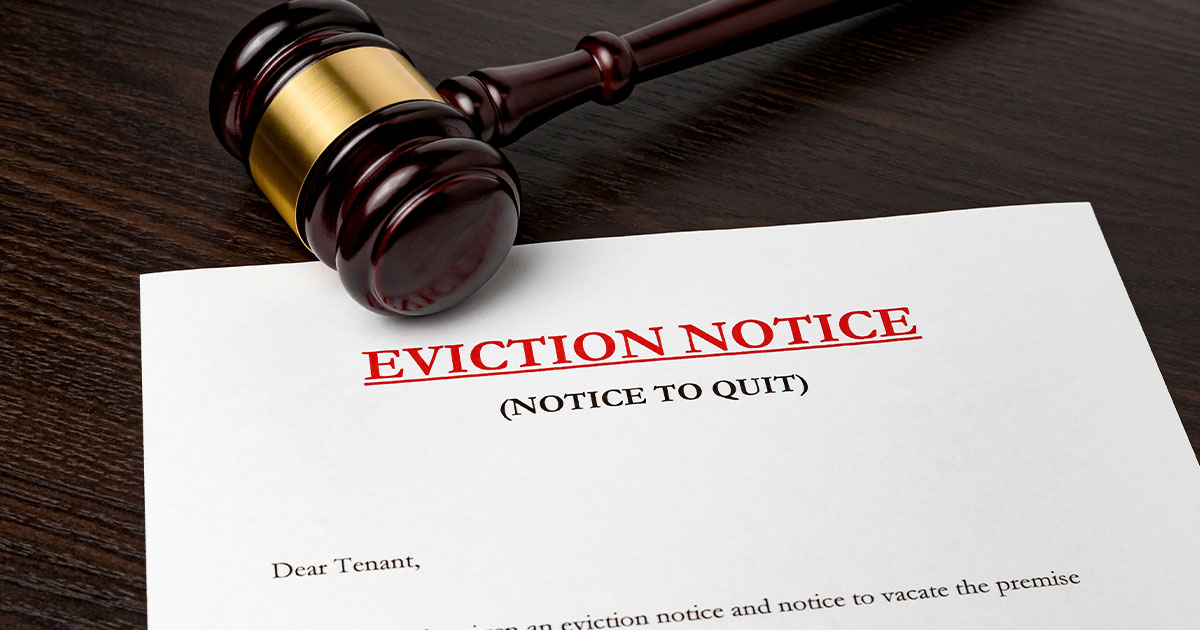Moving out of a rental property is an exciting but sometimes stressful process. One key step in this journey is writing a Notice to Vacate Letter, which is a formal notification to your landlord or property manager that you’re leaving the rental property. Whether you’re a first-time renter or an experienced tenant, knowing how to craft an effective notice is essential. In this guide, we’ll dive into the purpose of a notice to vacate, its key components, legal requirements, templates, and actionable tips to help you create a clear and professional letter. Plus, we’ll highlight common mistakes to avoid and offer advice on what to do after sending the notice. Let’s get started!
Quick Summary
In this article, we discussed the importance of a Notice to Vacate Letter, which informs your landlord that you’re planning to move out. We covered the purpose of the letter, legal notice periods, and the key components that should be included, such as tenant information, the move-out date, and a request for a final inspection. We also provided helpful templates for writing your notice and tips for sending it properly. Finally, we explored how to handle responses from your landlord, common mistakes to avoid, and the essential follow-up actions after sending your notice.
What is a Notice to Vacate Letter?
A Notice to Vacate Letter is a formal document that notifies your landlord or property manager of your intention to leave a rental property. It’s an essential part of the moving-out process and a legal requirement for many tenants, ensuring both parties have a record of the agreed-upon move-out date. This letter protects you as a tenant and helps to maintain a positive relationship with your landlord by providing ample time for them to prepare for your departure, whether through finding a new tenant or making necessary repairs.
Purpose of a Notice to Vacate Letter
The purpose of a Notice to Vacate is twofold:
- Legal Documentation: It serves as a formal, written notice that you intend to vacate the premises by a specific date. This provides legal clarity and acts as proof in case there’s any dispute about when you notified your landlord.
- Courtesy and Communication: Giving your landlord proper notice allows them to plan ahead, whether that involves finding a new tenant, arranging repairs, or finalizing paperwork. It also shows respect for the terms of the lease agreement.
Without a proper notice, you might face financial penalties such as losing part or all of your security deposit, paying additional rent, or even facing legal action.
Key Components of the Notice to Vacate Letter
A well-crafted Notice to Vacate Letter should include the following key components:
1. Tenant Information
At the top of the letter, include your full name, current address, and contact details. This identifies you as the tenant and ensures the landlord knows who is writing the letter.
2. Landlord or Property Manager Information
Directly below your information, provide the name of your landlord or property management company, along with their address. Make sure this information matches what’s listed on your lease agreement.
3. Date of the Letter
The date on which you’re writing the letter should be clearly mentioned. This helps to establish a timeline for the notice period, which is important for legal purposes.
4. Intended Move-Out Date
The most critical part of the letter is the move-out date. This is the day you plan to vacate the property and hand over the keys. Make sure the date has full compliance with the notice period specified in your lease (typically 30, 60, or 90 days).
5. Reason for Leaving (Optional)
While not always required, you may choose to provide a reason for your move. Whether you’re relocating for work, upgrading to a new home, or simply want a change, stating the reason can help maintain a positive relationship with your landlord.
6. Request for a Move-Out Inspection
Many tenants request a final inspection to assess any damage or repairs needed. This is also your opportunity to ensure that your security deposit will be returned in full (assuming no major damage is found).
7. Forwarding Address (Optional)
If you’re expecting to receive your security deposit or any other communication, you should include a forwarding address where your landlord can reach you after you’ve moved out.
8. Signature
End your letter with a polite closing statement and your signature. If sending a physical letter, sign it by hand. For email notices, typing your name is acceptable, but it’s a good idea to follow up with a hard copy.
Legal Requirements for Notice Period
How Much Notice Should You Give?
One of the most important aspects of your Notice to Vacate Letter is ensuring it aligns with the legal notice period outlined in your lease agreement. Here’s what you need to consider:
- 30 Days’ Notice: This is the most common requirement for month-to-month leases, meaning you need to notify your landlord at least 30 days before your intended move-out date.
- 60 or 90 Days’ Notice: Some rental agreements, particularly long-term leases, may require 60 or 90 days’ notice. Be sure to check your lease to avoid breaking any terms.
Exceptions to the Notice Period
There are a few instances where the required notice period might not apply:
- Breaking a Lease Early: If you’re leaving before your lease ends, you may be subject to early termination fees, unless there are extenuating circumstances such as unsafe living conditions or a job relocation.
- Rent Control Laws: Some jurisdictions with rent control may have specific notice periods or other tenant protections that override what’s in your lease contract.
Always review local tenant laws or consult a legal professional if you’re unsure about the notice period in your housing area.
Templates for a Notice to Vacate Letter
Writing a Notice to Vacate Letter doesn’t have to be difficult. Below are some simple templates you can use:
Template 1: Simple 30-Day Notice to Vacate
[Your Name]
[Your Current Address]
[City, State, ZIP Code]
[Date]
[Landlord’s Name]
[Landlord’s Address]
[City, State, ZIP Code]
Dear [Landlord’s Name],
I am writing to inform you that I will be vacating the property at [Your Current Address] on [Intended Move-Out Date]. This notice complies with the 30-day notice period as per our lease agreement. I will return the keys and ensure the property is in good condition on or before this date.
Please let me know if you would like to schedule a move-out inspection.
Sincerely,
[Your Name]
Template 2: Early Lease Termination Notice
[Your Name]
[Your Current Address]
[City, State, ZIP Code]
[Date]
[Landlord’s Name]
[Landlord’s Address]
[City, State, ZIP Code]
Dear [Landlord’s Name],
I regret to inform you that due to [Reason for Moving, e.g., job relocation, personal reasons], I must break my lease agreement and vacate the property at [Your Current Address] on [Intended Move-Out Date]. I understand that breaking the lease early may involve additional fees, and I am willing to discuss this further.
Please let me know the next steps and how we can arrange a final inspection.
Sincerely,
[Your Name]
How to Address the Letter
Addressing the Notice to Vacate Letter correctly is crucial to ensuring it reaches the right person and is acknowledged. Here’s how you can address it properly:
- Use Formal Titles: Always address the letter formally to your landlord or property manager. If you’re unsure of the correct name, check your lease or payment records obligation.
- Double-Check Contact Information: Be sure that the address and names are accurate to avoid any issues with delivery or legal disputes.
- Send to the Landlord’s Business Address: If your landlord has a specific business address or if you’re working with a property management company, send the letter to the address listed on your lease or official residence correspondence.
Sending the Notice to the Landlord
Once your Notice to Vacate Letter is written, you need to decide how to send it. There are several methods, each with varying levels of formality and security:
1. Hand-Delivery
Hand-delivering your letter ensures your landlord receives it immediately. Make sure to ask for a receipt or some form of acknowledgment that the penalty notice was received.
2. Certified Mail
Sending the eviction notice via certified mailing address offers an official record of delivery. This is a good option situation if you want extra legal protection in case any disputes arise.
3. Email
Some landlords accept notices via confirmation email. However, it’s always best to follow up with a hard copy just to be safe. Save a copy of your sent email and request a read receipt.
Handling Responses from the Landlord
Once you’ve sent your notice, your landlord will typically respond with instructions on the next steps, such as:
- Move-Out Inspection: Your landlord may request a final inspection to assess the condition of the property occupancy.
- Security Deposit Return: You should discuss when and how your security deposit will be returned.
- Further Communication: If any issues arise, such as rent discrepancies or damage to the property, maintain clear communication with your landlord to resolve them quickly.
Tips for Writing an Effective Letter
Here are some tips to help you write a clear, effective Notice to Vacate Letter:
- Be Polite and Professional: Maintain a respectful tone throughout the letter.
- Stick to the Facts: Keep the letter short and factual. There’s no need to include excessive details.
- Proofread: A typo in your letter may lead to confusion or misinterpretation. Double-check for errors before sending.
Common Mistakes to Avoid
Avoid these pitfalls when writing your Notice to Vacate Letter:
- Not Checking the Lease Terms: Failing to provide the required notice period could result in penalties.
- Leaving Out Important Information: Be sure to include your move-out date, forwarding address, and contact information.
- Missing the Deadline: Always ensure you send the notice well before your lease’s required notice period ends.
Follow-up Actions After Sending the Notice
After sending the letter, don’t forget to:
- Schedule a Move-Out Inspection: Confirm the date/time/phone number with your landlord.
- Clean and Prepare the Property: Make sure the rental is in good condition to maximize your chances of getting your full deposit back.
- Return the Keys: Hand over the keys on or before your move-out date to avoid any additional amount charges.



